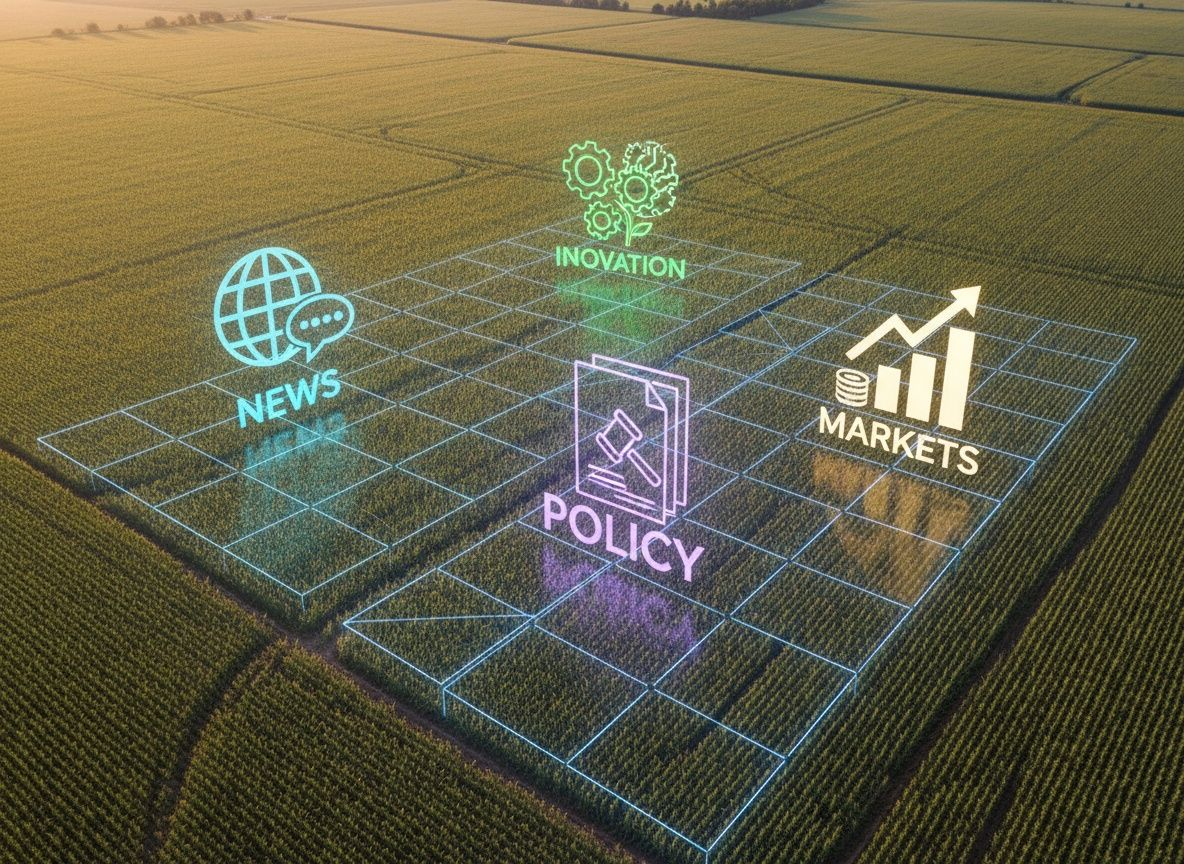What is the Farm Bill?
Breaking Down the Titles of the Farm Bill
In a simple explanation, the farm bill is a package of legislation that governs an assemblage of agriculture and food programs. However, there is nothing simple about the farm bill.
While the roots of the farm bill are planted deep in its farm support programs, the bill has expanded to address various issues in an ever-evolving world. From conservation initiatives and bioenergy to rural development and nutrition policy, the farm bill provides funding for programs that impact individuals of different regions and social demographics across the country.
The current farm bill is made up of 12 titles:
Title I: Commodities — Provides support for major commodity crops, including wheat, corn, soybeans, peanuts, rice, dairy, and sugar. Reauthorizes marketing loan and disaster programs. Title I includes funding for the Agriculture Risk Coverage (ARC) and Price Loss Coverage (PLC) programs.
Title II: Conservation — Encourages environmental stewardship of farmland and refined land management through land retirement programs and/ or working lands programs. Addresses environmental and natural resource concerns[HB2] . Title II includes funding for the Conservation Reserve Program (CRP) and the Environmental Quality Incentive Program (EQIP).
Title III: Trade — Supports the U.S. agricultural export programs as well as various international food assistance programs. Title III includes funding for the Foreign Market Development (FMD) and Market Access Development Programs (MAP).
Title IV: Nutrition — Provides nutrition assistance for low-income households through programs, including the Supplemental Nutrition Assistance Program (SNAP).
Title V: Credit — Provides lending opportunities that private commercial entities cannot offer, consisting of direct government loans for producers to buy land and operate farms and ranches.
Title VI: Rural Development — Provides funding to programs to build competitive advantages in rural communities. Supports rural housing, business, community facilities, and utility programs through grants, loans, and guarantees.
Title VII: Research, Extension, and Related Matters — Supports agriculture extension and research programs to develop academic knowledge and assist producers in becoming more productive. Title VII includes funding for programs such as the Beginning Farmer and Rancher Development Program and the Agriculture and Food Research Initiative.
Title VIII: Forestry — Provides authority for the U.S. Forest service and supports forestry management programs.
Title IX: Energy — Encourages the expansion of community and farm renewable energy systems through different programs, including various loan guarantees and grants.
Title X: Horticulture — Supports the production of specialty crops, certified organic foods, and certified local foods. Authorizes a regulatory framework for industrial hemp. Title X includes funding for the National Organic Program and Specialty Crop Block Grants.
Title XI: Crop Insurance — Enhances risk management through the permanently authorized Federal Crop Insurance Program. Helps protect producers from losses resulting from yield and price risks. Title XI includes funding for disaster assistance programs (also under Title I) as well as Emergency Farm Loans and Whole Farm Revenue Protection.
Title XII: Miscellaneous — Includes various programs and assistance for livestock and poultry production and provides support for beginning farmers and ranchers. Includes supports for agriculture and food defense, limited-resource producers, historically underserved producers, and other miscellaneous provisions.
Barring complications, the farm bill is typically renewed every five years, reauthorizing programs that would otherwise expire and extending funding for the bill’s permanent programs. The current farm bill is called the Agriculture Improvement Act of 2018 and was enacted into law in December of 2018. This bill has been extended through September 30, 2024, and Congress is currently drafting and debating the next farm bill.






